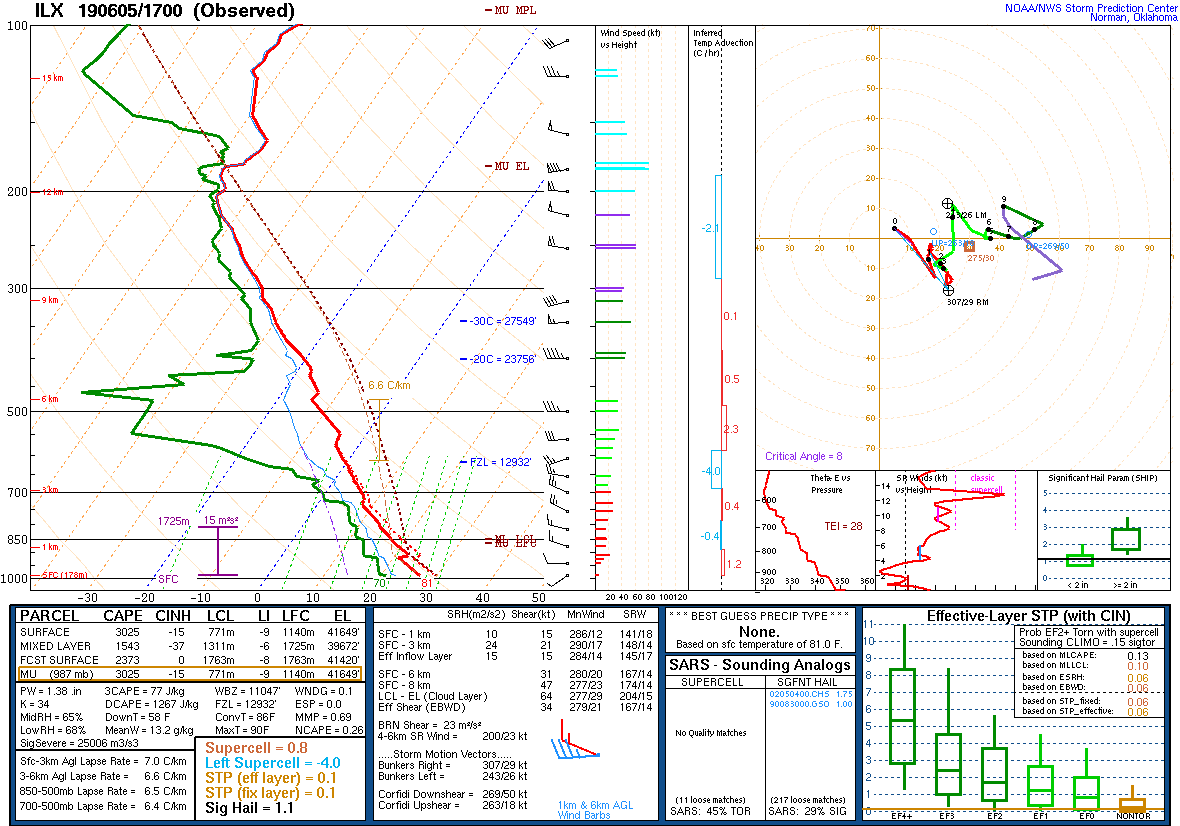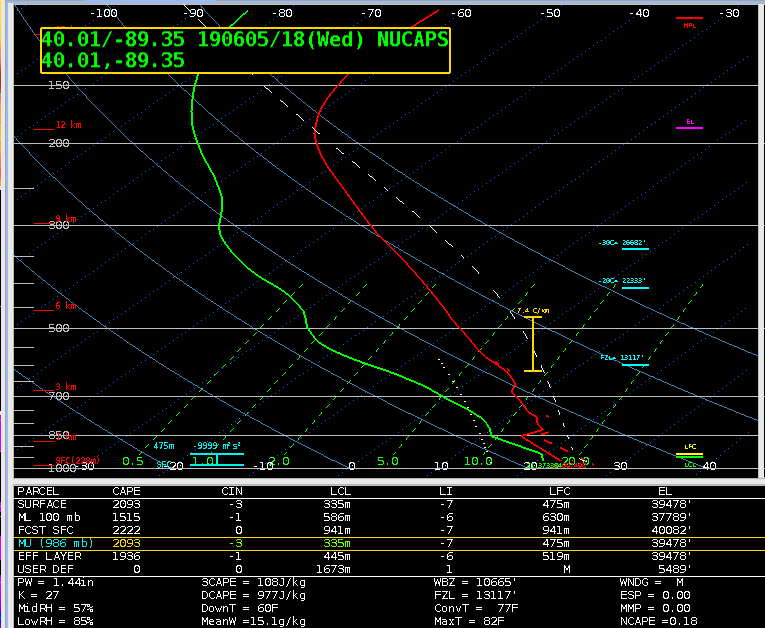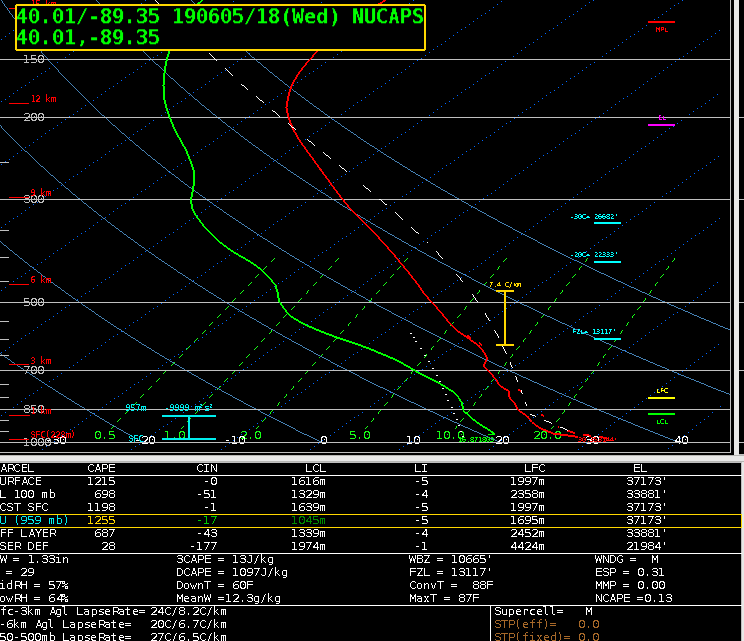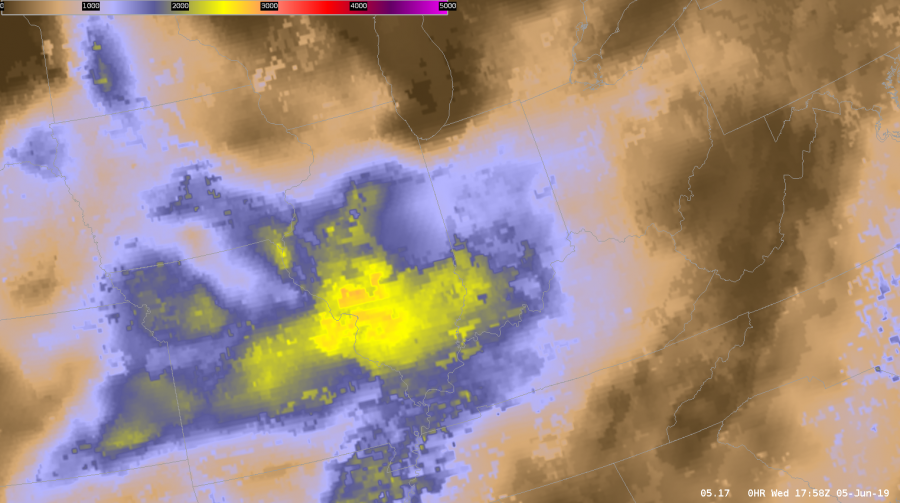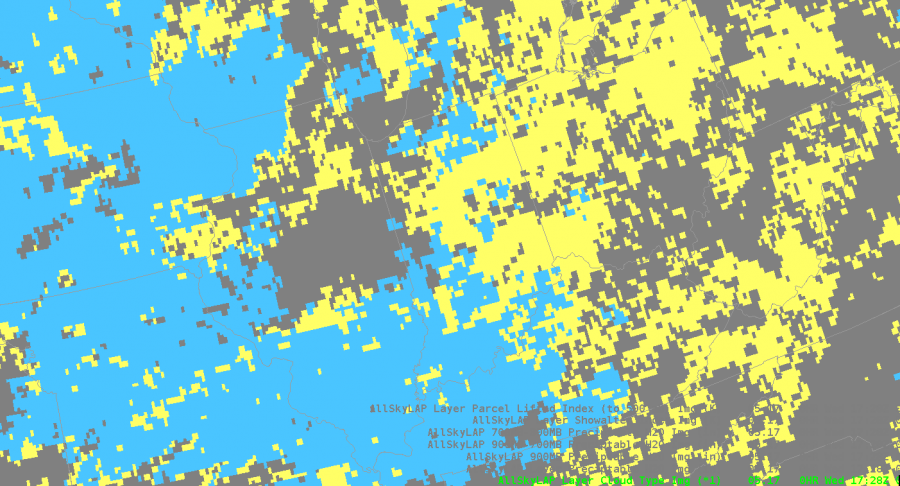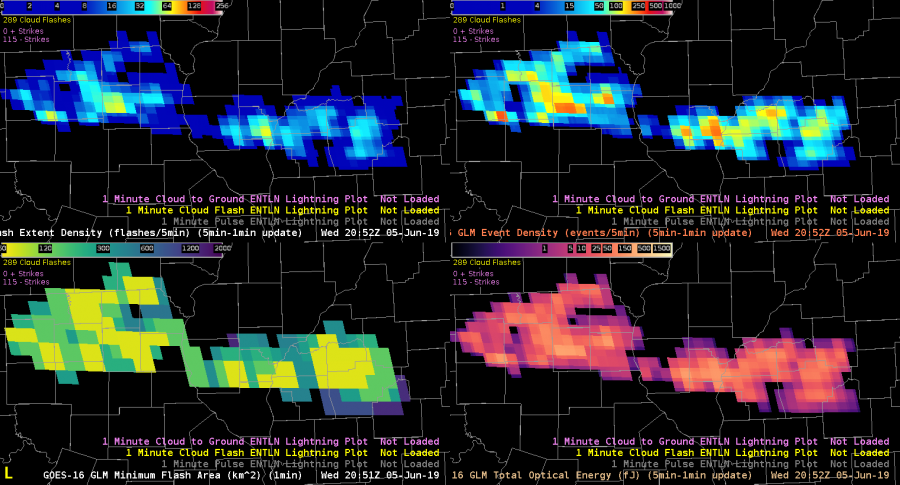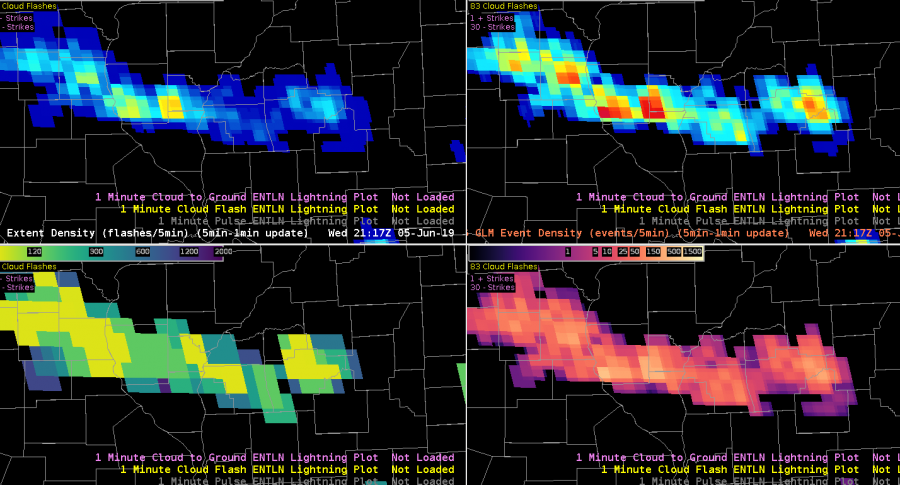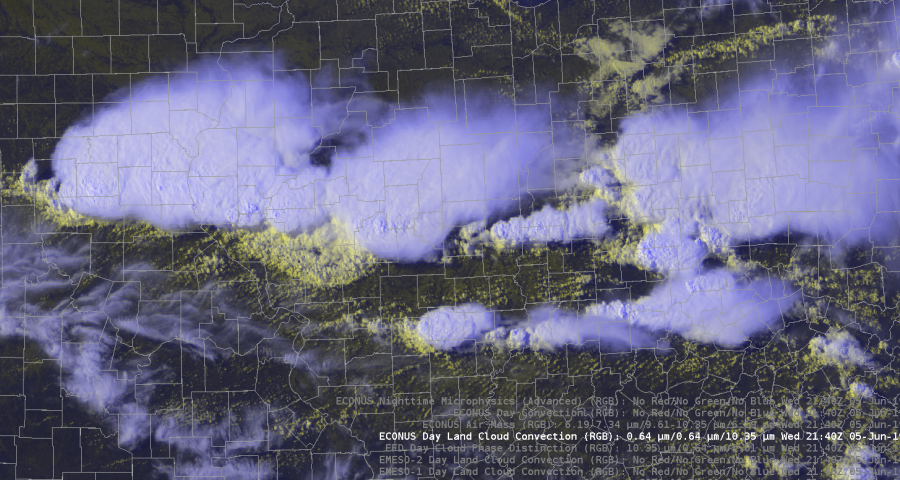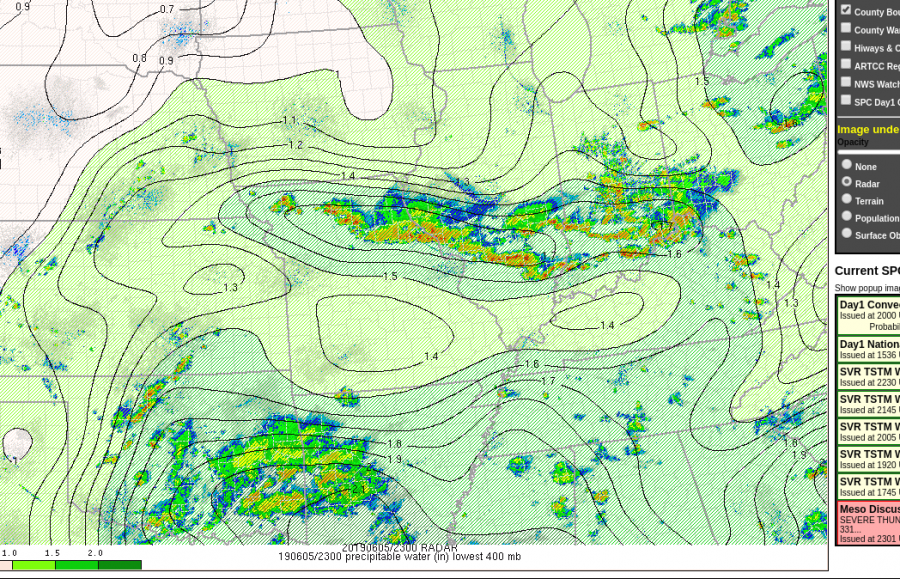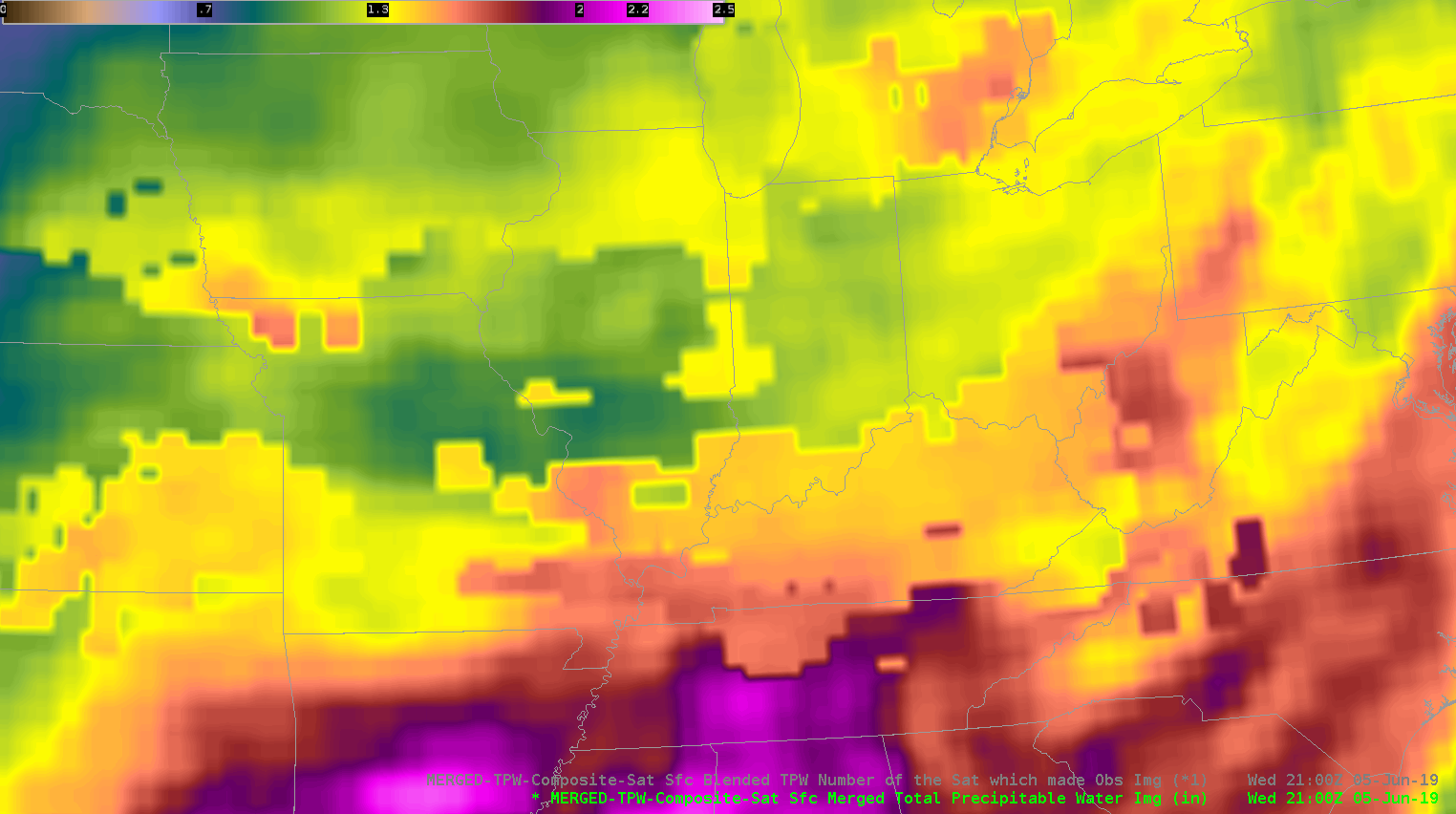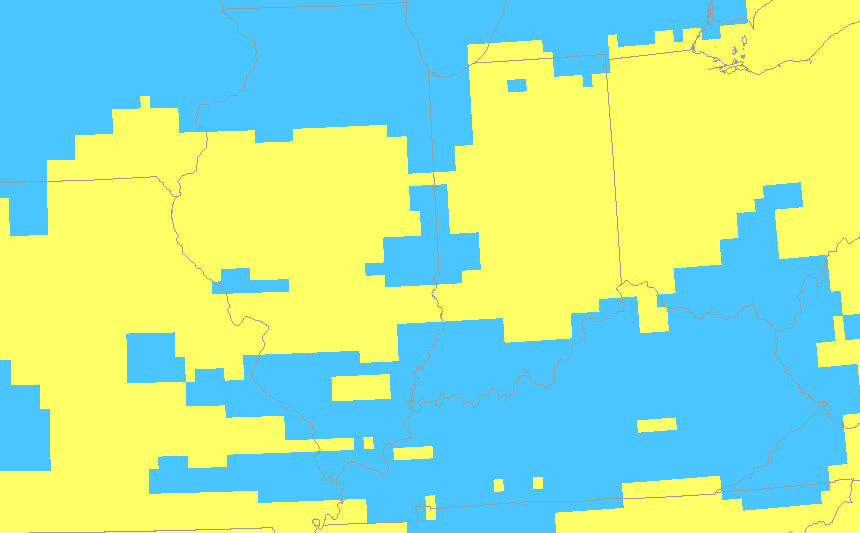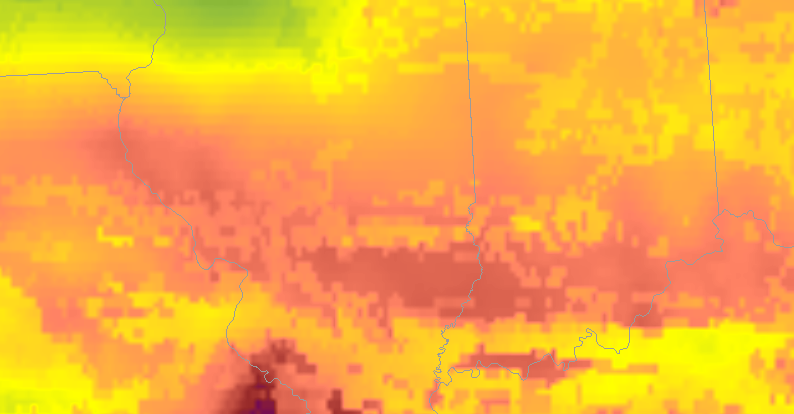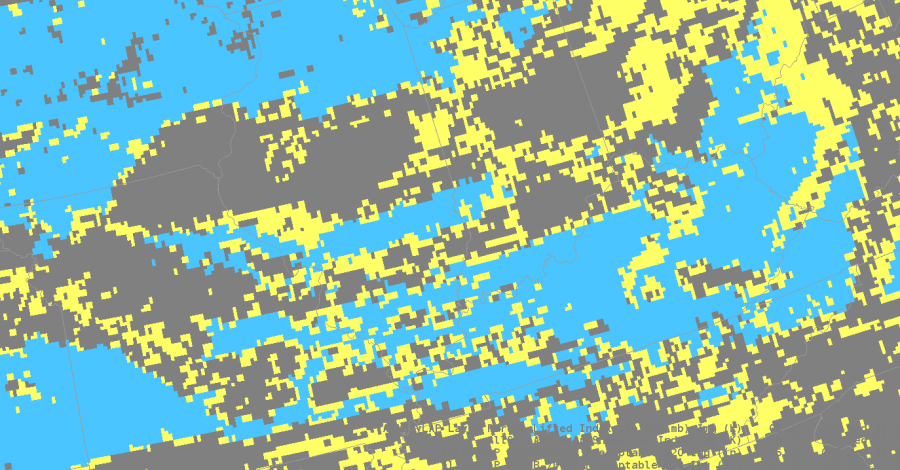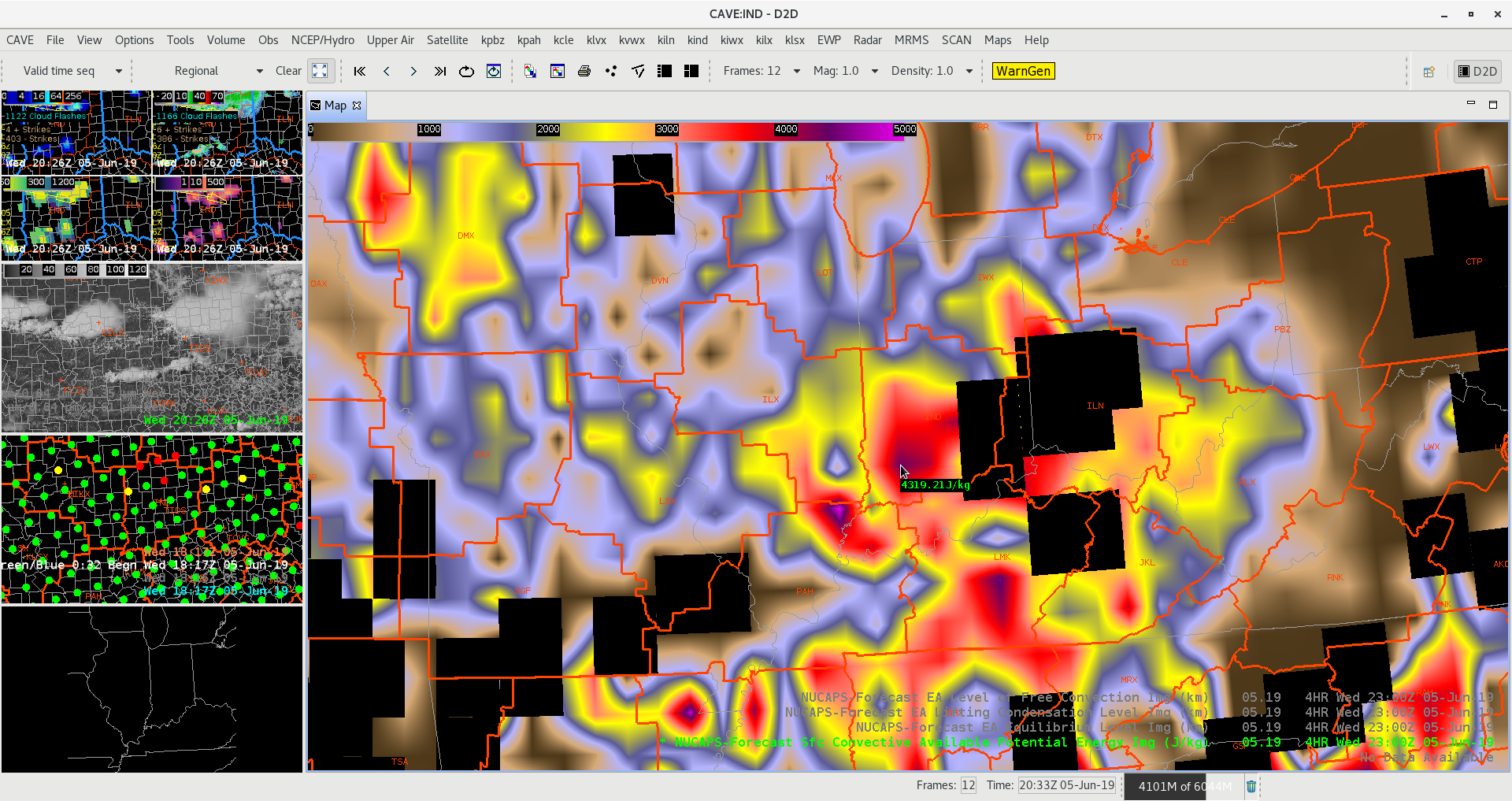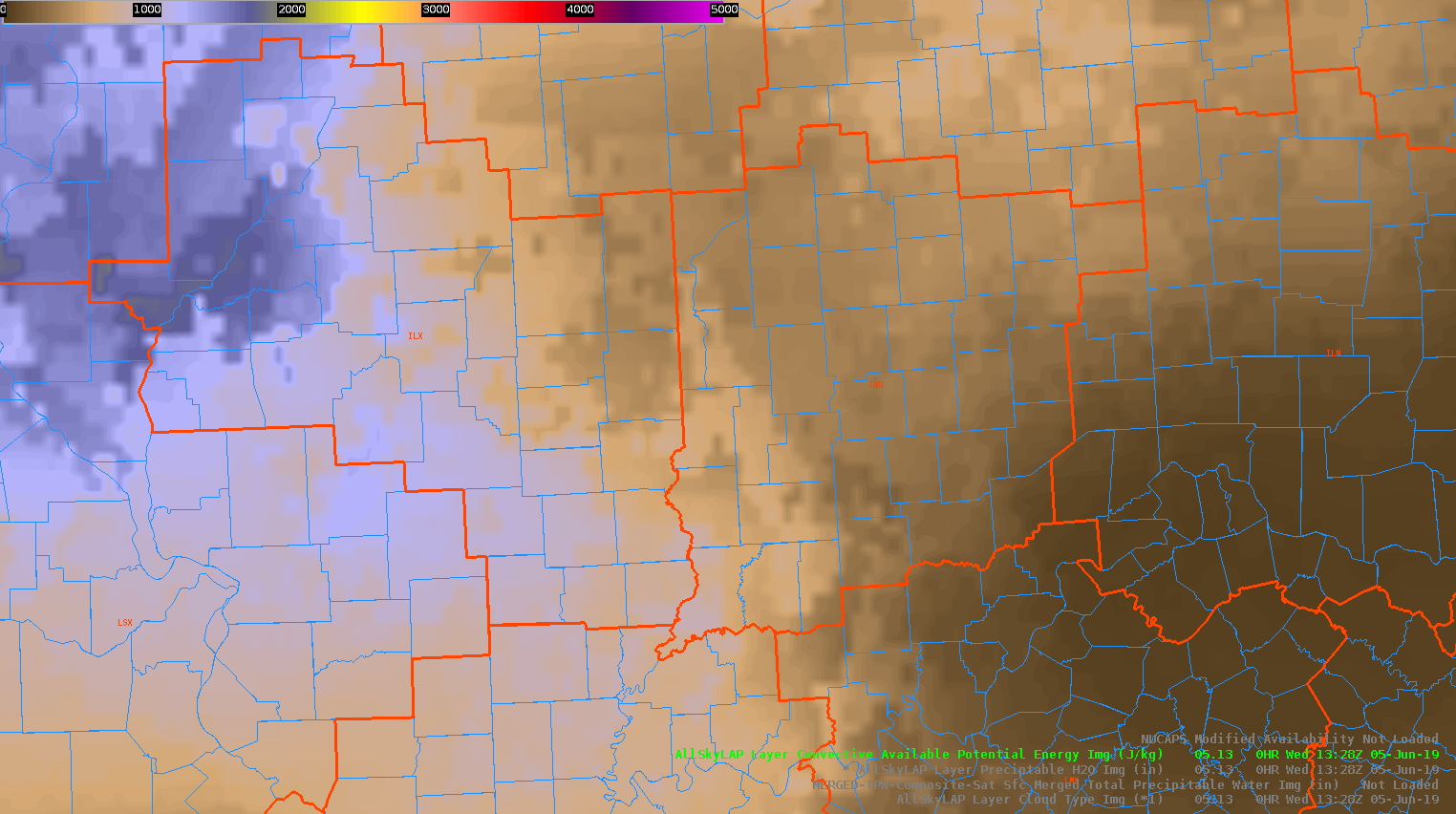The modified NUCAPS sounding from 1730 UTC revealed in excess of 2,000 J/kg of CAPE (image 2) and by 1900 UTC thunderstorms had developed in an area less shaded by high level cloud cover. Comparing this to RAP mesoanalysis data, it initially seemed too high as RAP mesoanalysis suggested closer to 1000-1500 J/kg (not shown) and based on initial lightning activity. SBCAPE from NUCAPS was extremely high and close to 4,000 J/kg which seems very high (image 3). We did note that for some reason the NUCAPS forecast image showed CAPE being “missing” over central MD/northern VA while the CIN fill was more complete. When sampled over the “missing” data in AWIPS in the Cloud, the readout showed actual values.
Initially, storms appeared to struggle with flash counts on the order of 10 to 20 flashes. Over the course of 30 to 45 minutes, lightning flash counts increased by an order of magnitude (closer to 100-150 flashes)
Closer to 2020-2030 UTC the rigor of convective elements increased and we started seeing transient echo overhang/along with some weak echo regions in tandem with an increase in both lightning activity as well as ProbSevere trends (especially ProbSevere3) as seen in Image 4. This increased our confidence in issuing our own warnings with LWX having a couple of warnings already issued.
Closer to 21:50 UTC things became a bit more interesting from both a radar and lightning standpoint. Imagery from the KDOX radar (Central Delaware) suggested increasing mesocyclogenesis across Baltimore County (image 8) due north of Baltimore.
From a comparison of these images, there was certainly an indication that the updraft was increasing as FED magnitude increased from 51 flashes/5 min to 99 flashes/5 min. MFA also became more concentrated NW of the City of Baltimore and Baltimore County as seen in images 9 and 10. WFO LWX issued a Tornado Warning around 20:51 UTC.
An animation of the TDWR at Baltimore Washington Airport (image 11) had signs of a possible low-level RFD surge (not shown) in the 0.5 degree rapid scan tilt and increasing low level rotation consistent with either a stronger surge of straight line winds or a QLCS mesovortex/tornado. Aloft, (not shown) there did appear to be healthy reflectivity aloft and the concentrated MFA may suggest that a strengthening updraft.
Image 11 from KDOX shows a loose mid-level mesocyclone with a gradual increase in ProbSevere3 with the time series. In this image, the storm was currently tornado warned by WFO LWX. At time we’d likely opt for a tornado possible warning and monitor very, very closely.
By 21:13Z The storm of interest is looking LESS favorable for tornado although prob severe tor increased significantly to closer to 20% perhaps due to an elongated zone of low level shear.
Prob Severe Table Ideas: If the tables could open in a floating tab in Awips that would be very helpful. This way you can manually dock and move the tab around in awips. This way you can quickly view the tab and keep it open until you want to just close it. You can also rename the tab to whatever will help you keep track of the storm that it belongs to. This would get around needing to color code multiple tables etc.
A separate tab will also allow room to show additional information (beyond just prob severe).
Prob Severe jumped to nearly 80% with a fast moving bowing segment through Montgomery County.
– By Miles and Dwight Schrute

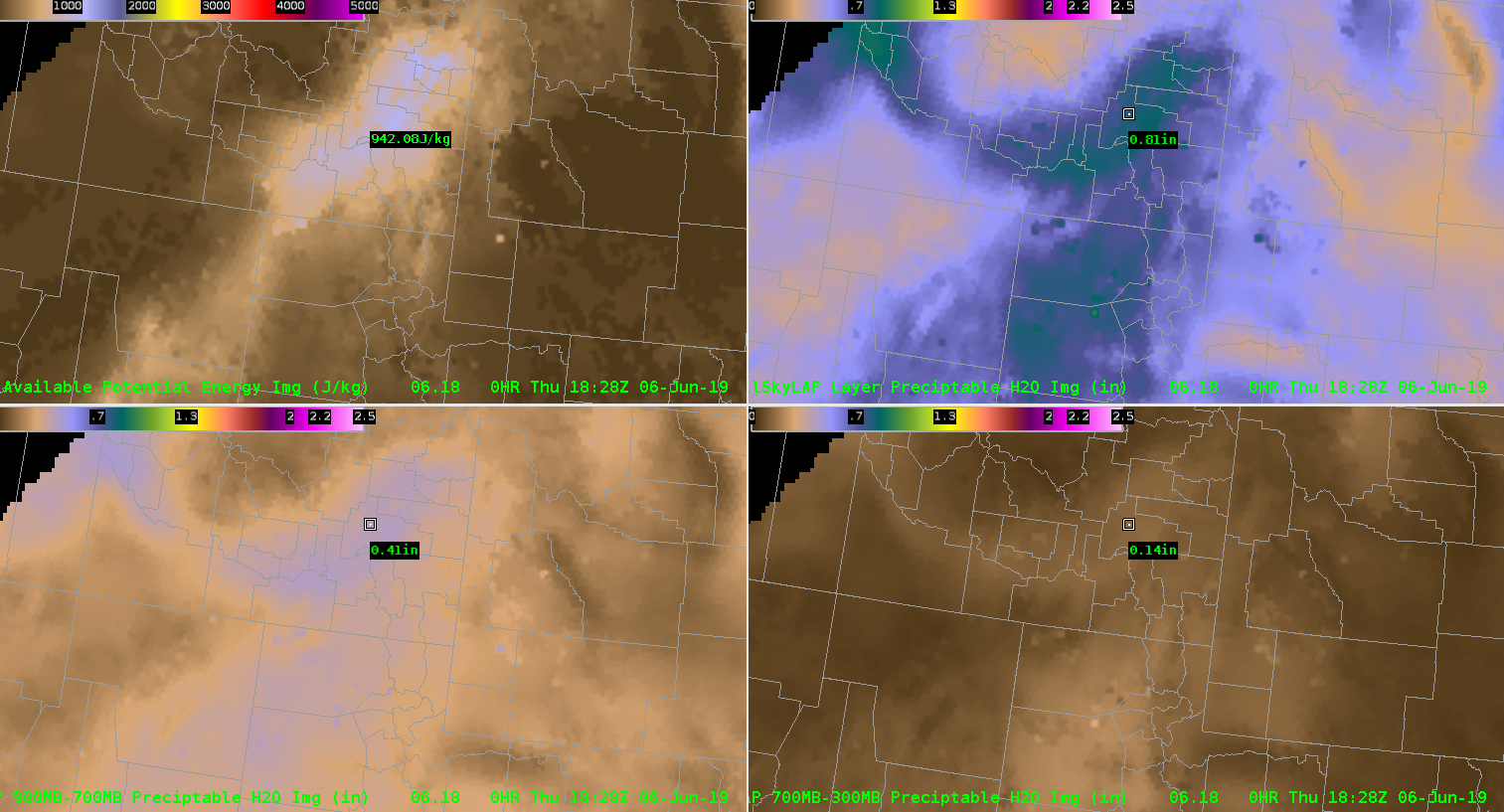
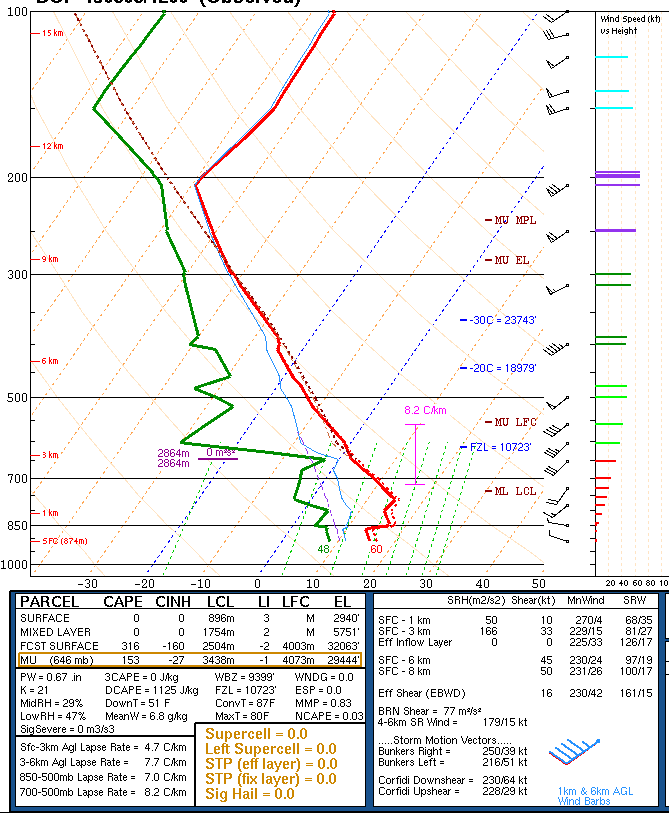
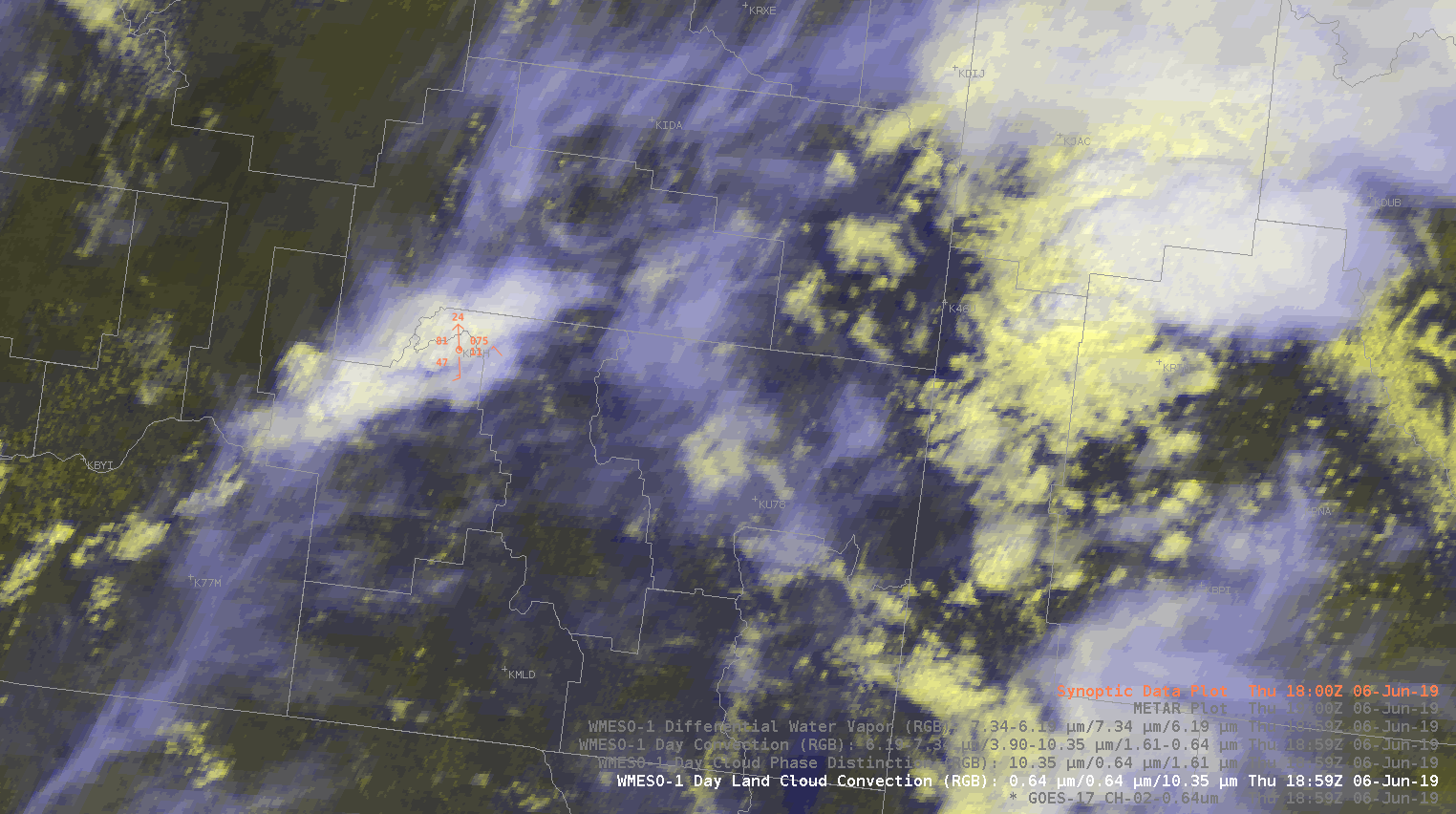
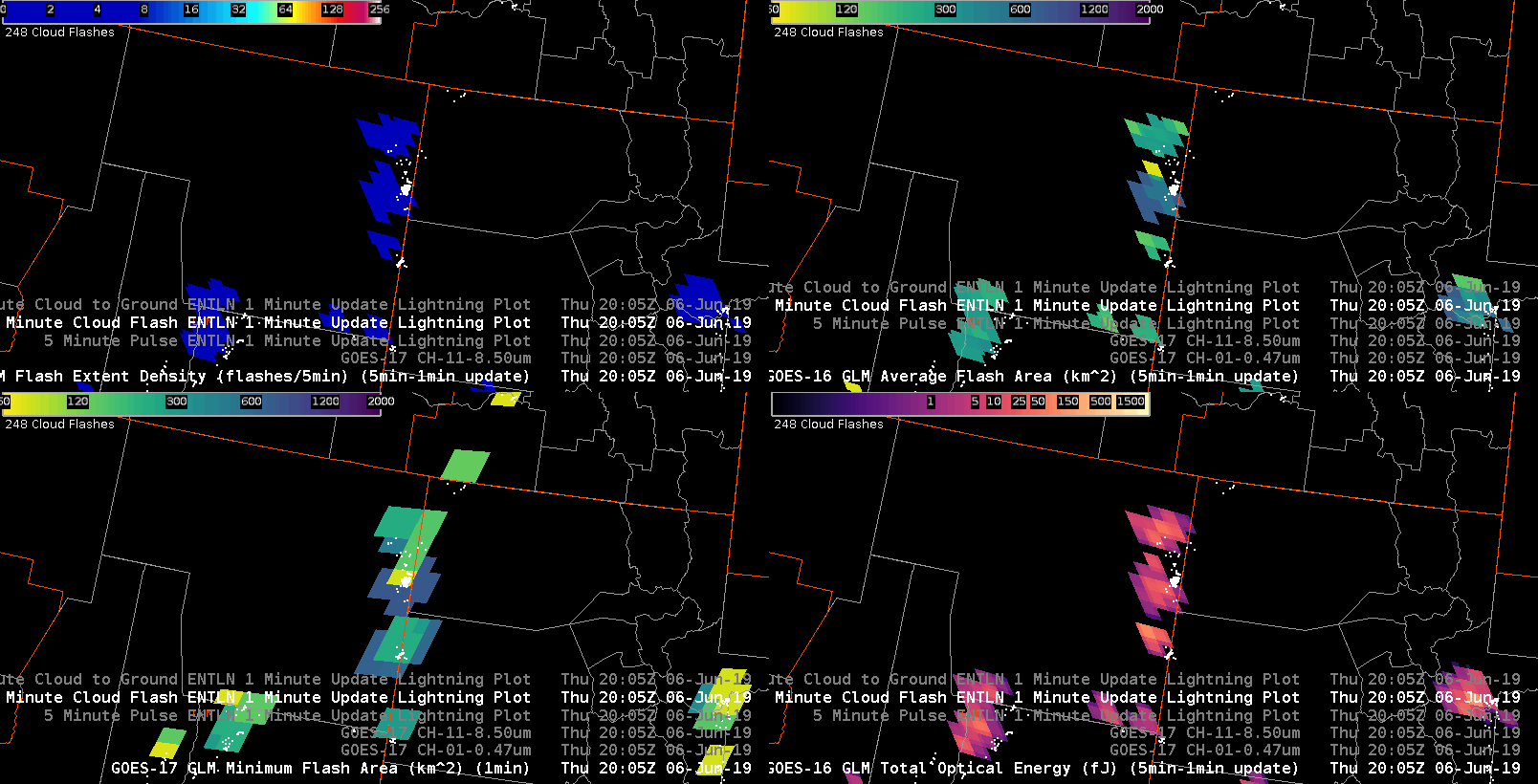
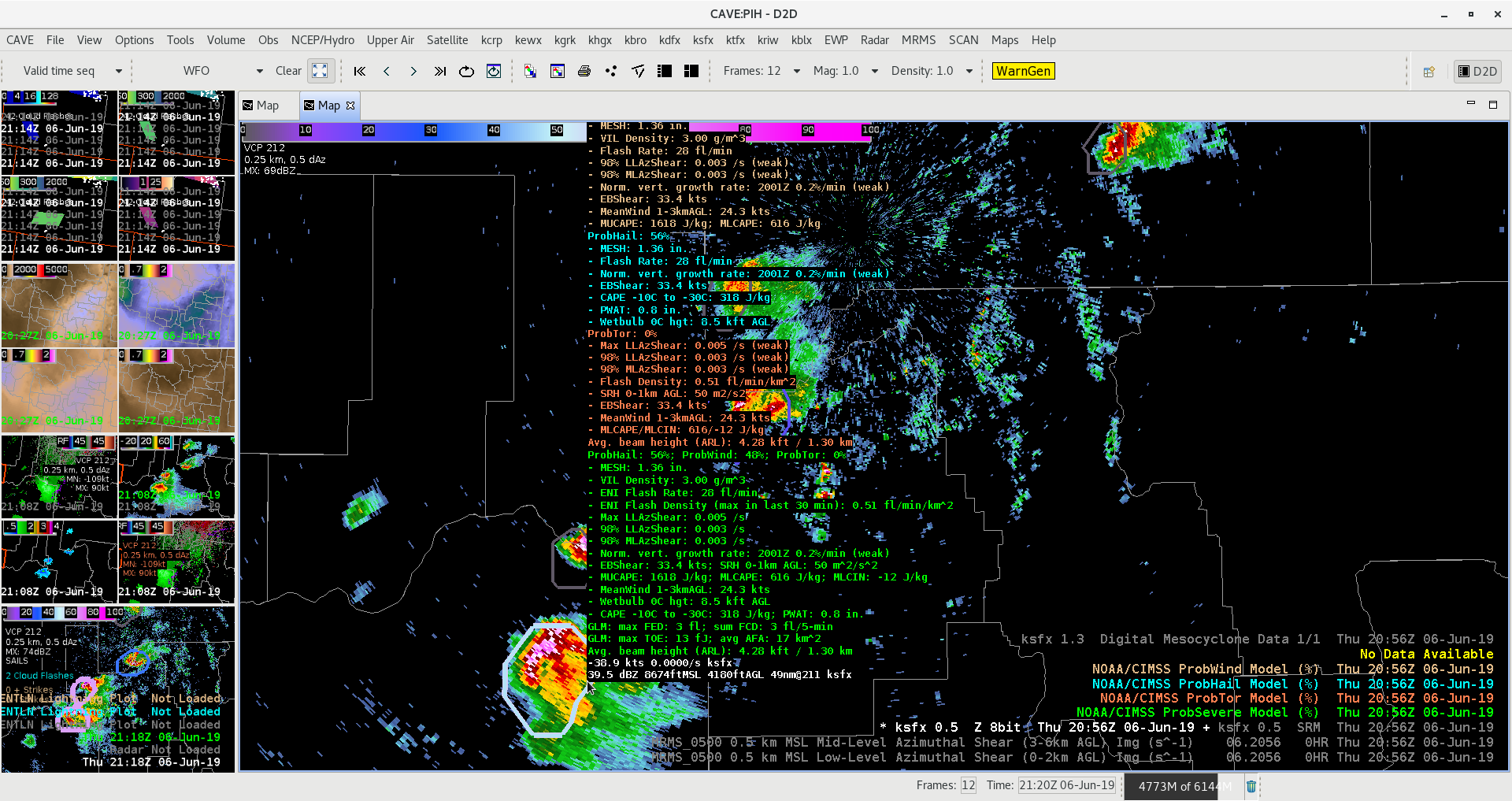
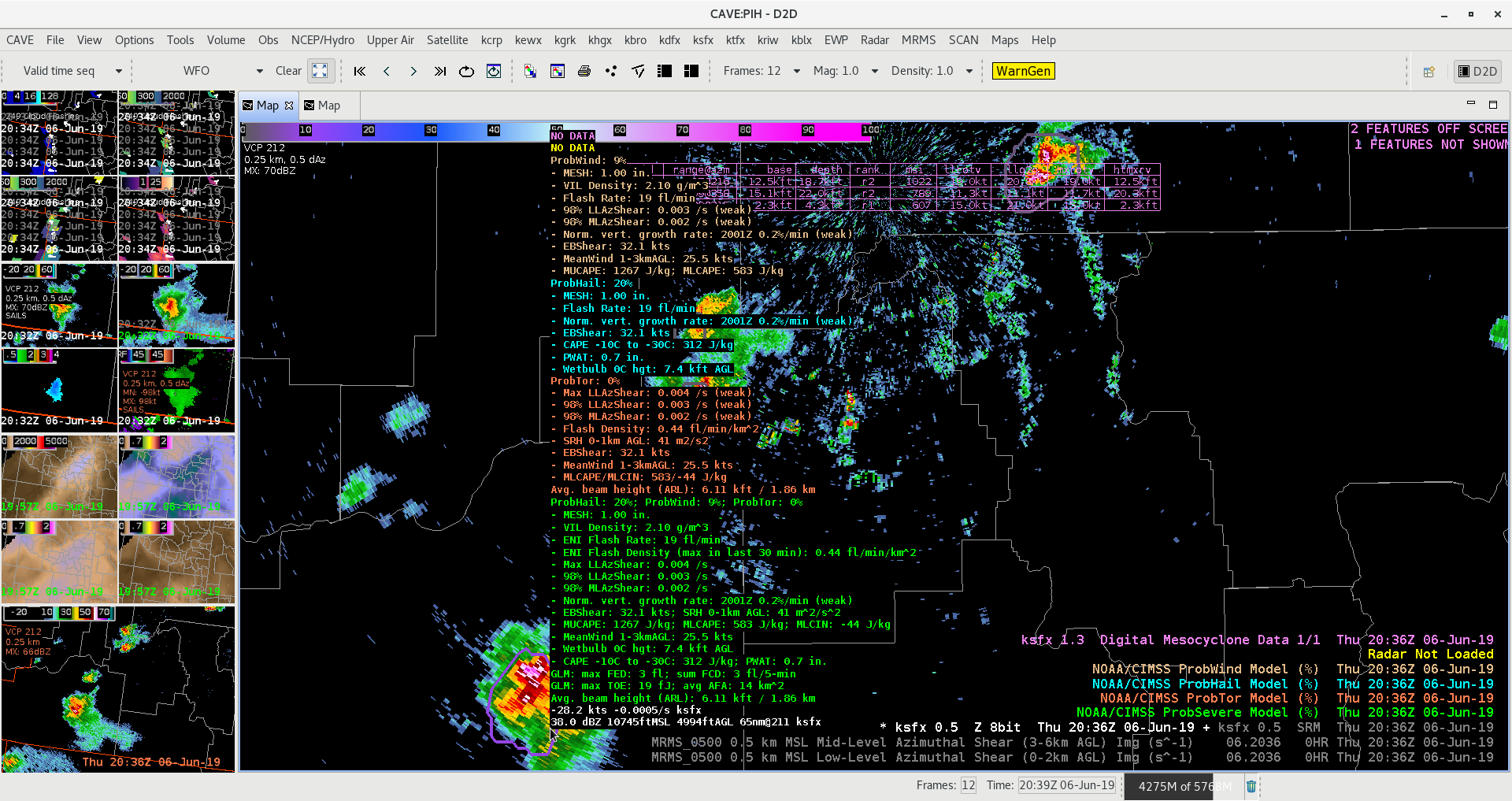
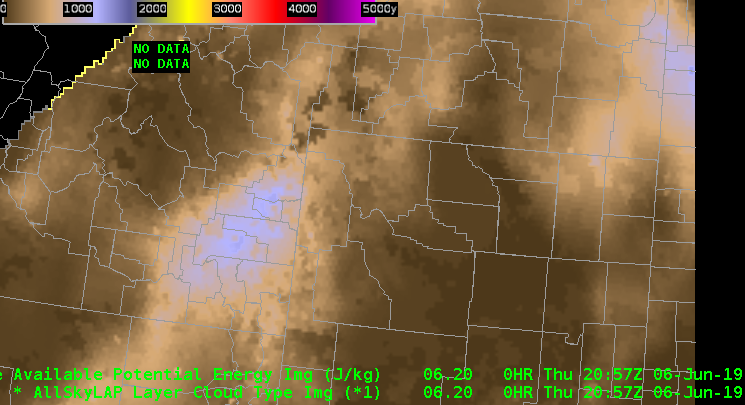

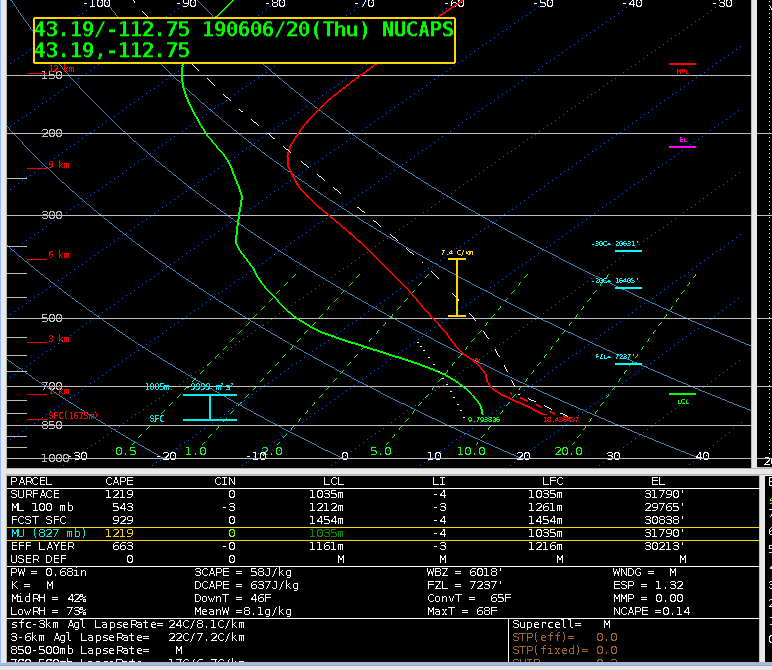
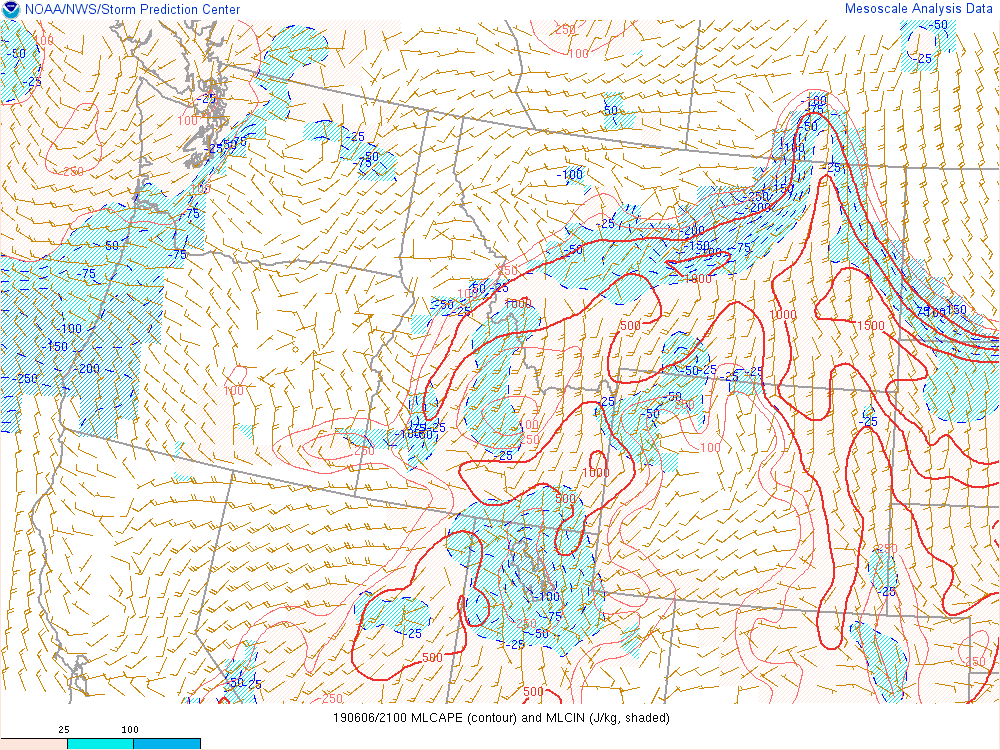
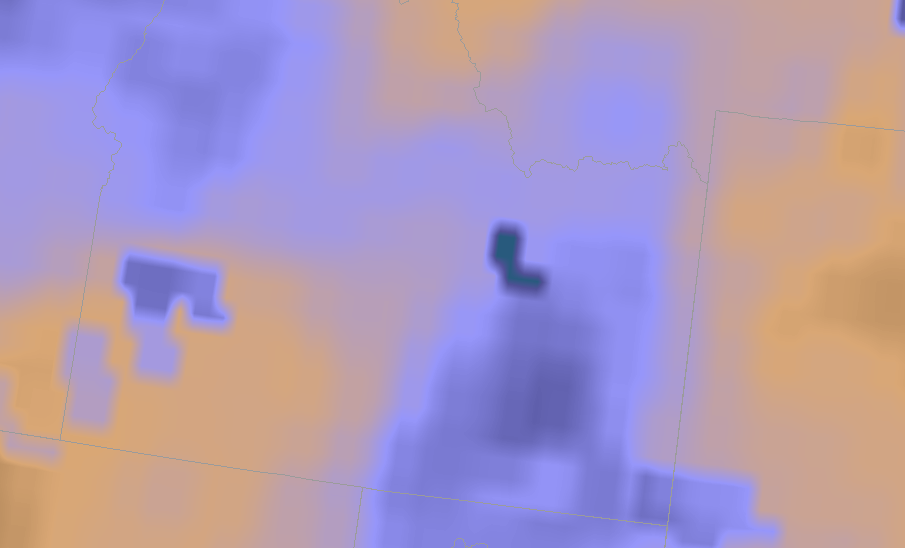
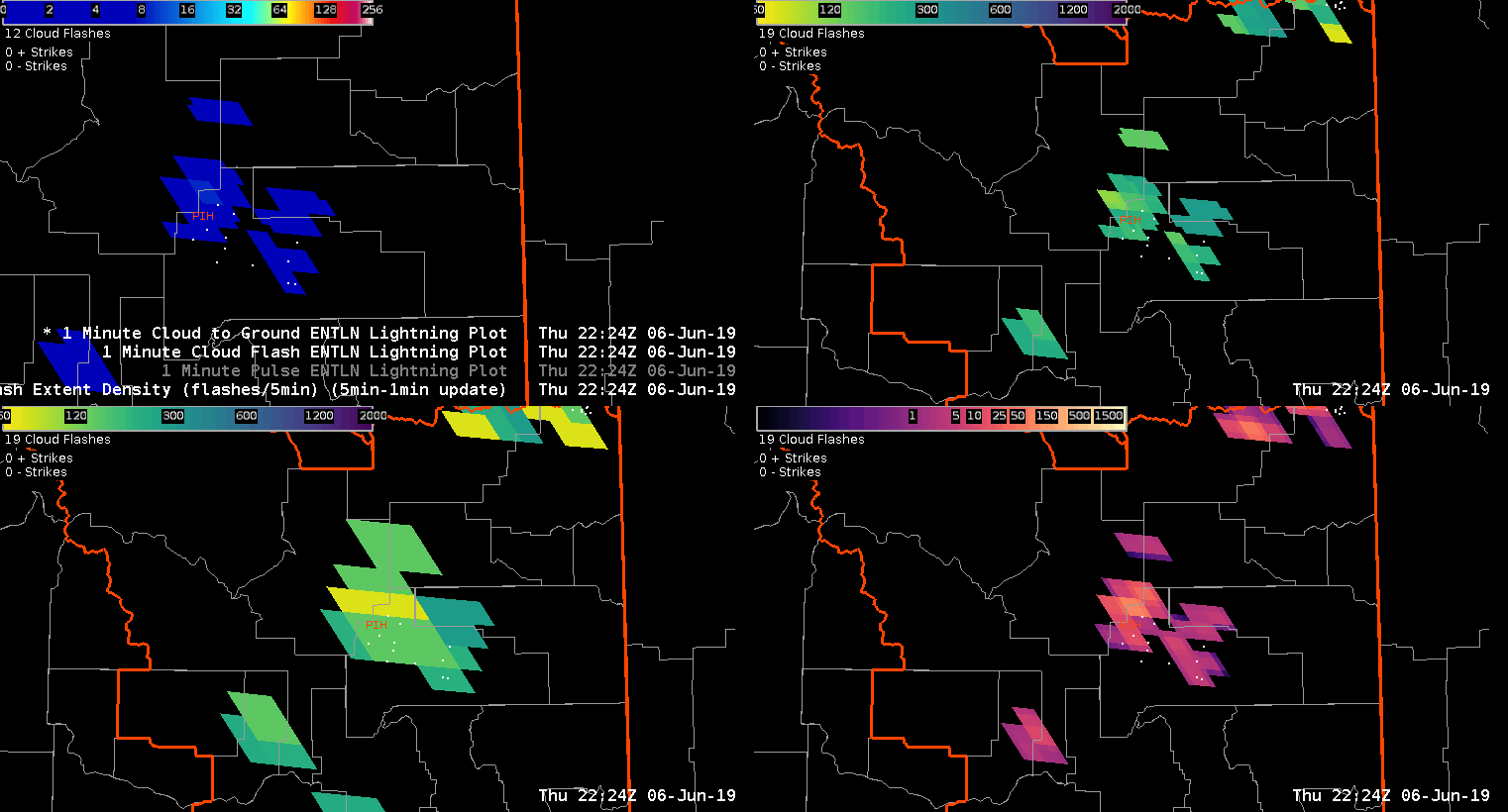
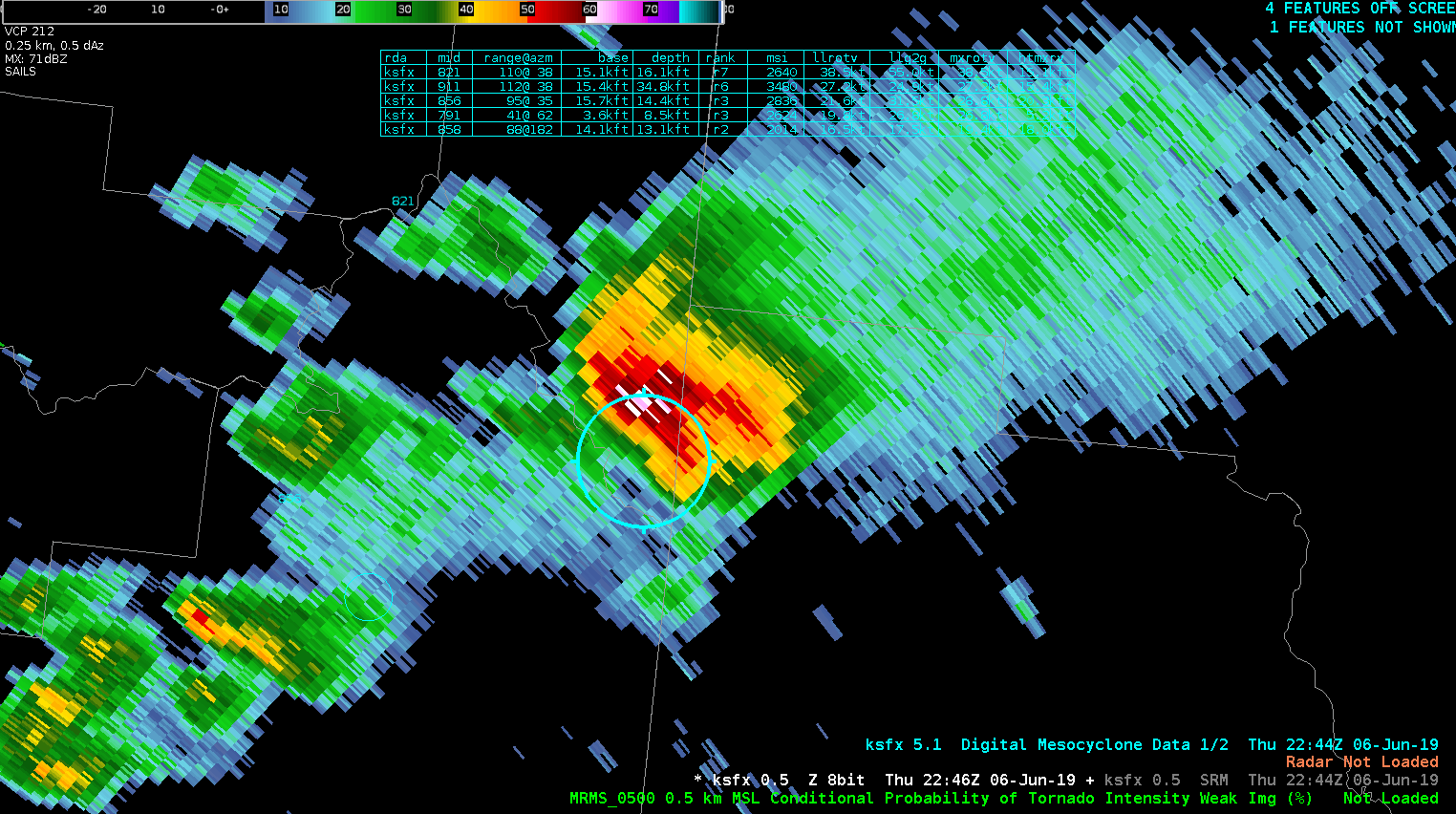
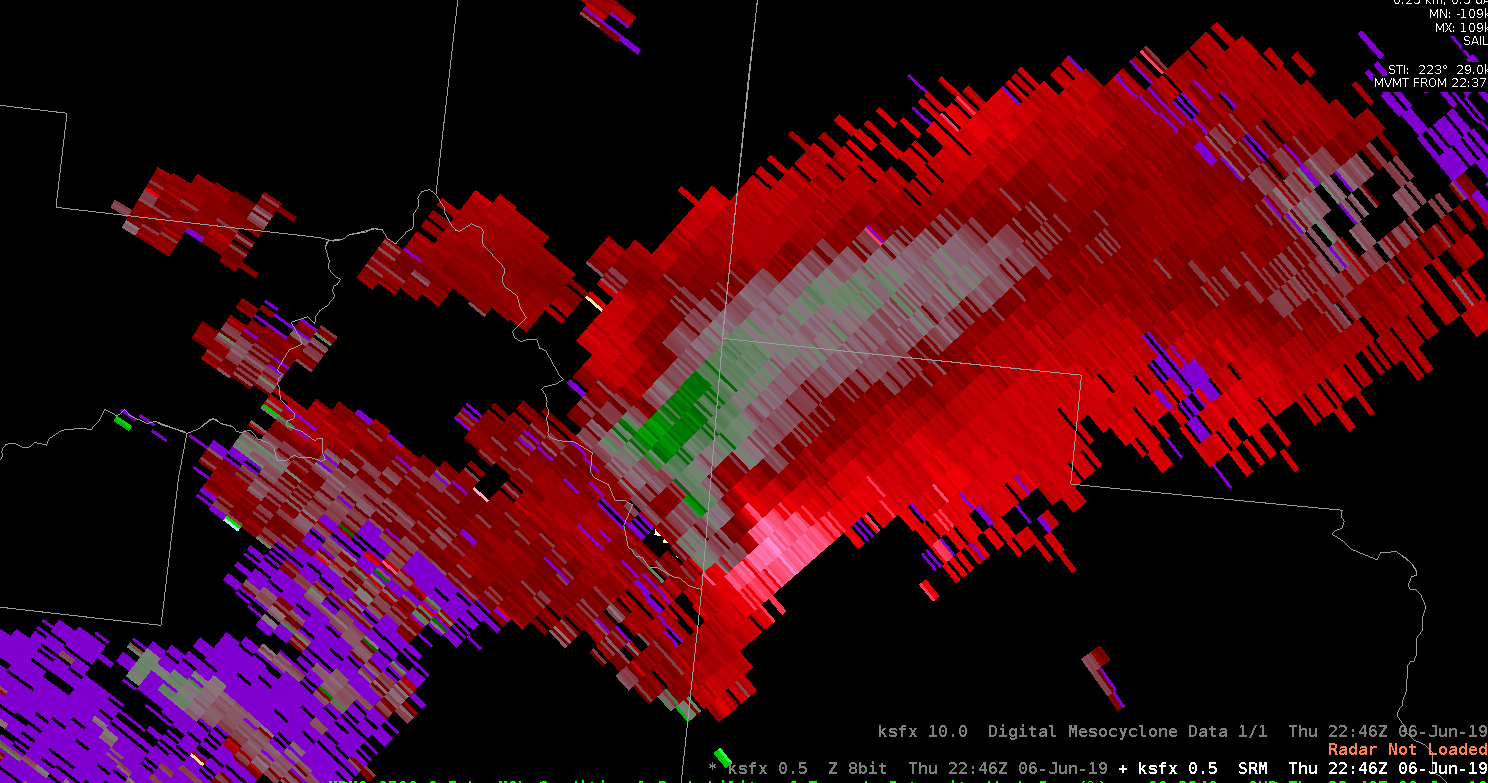

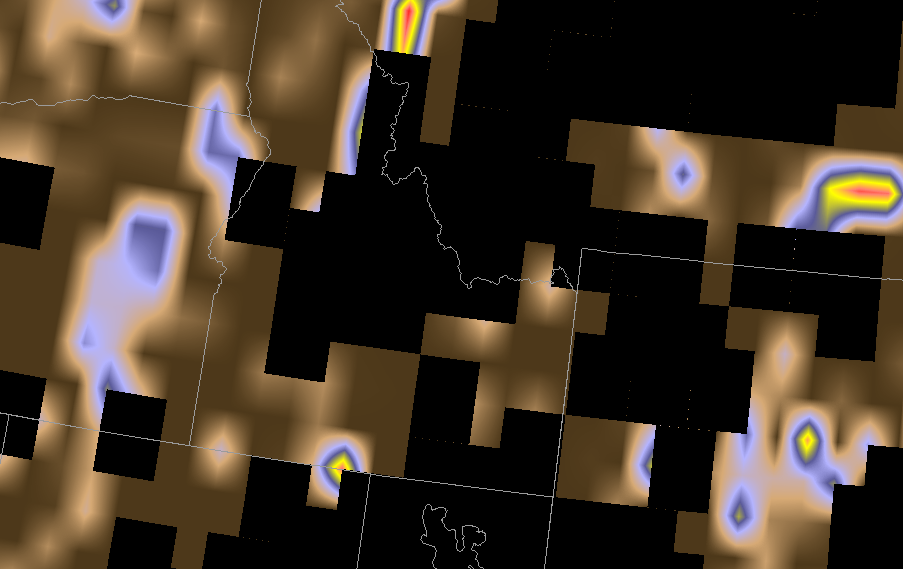
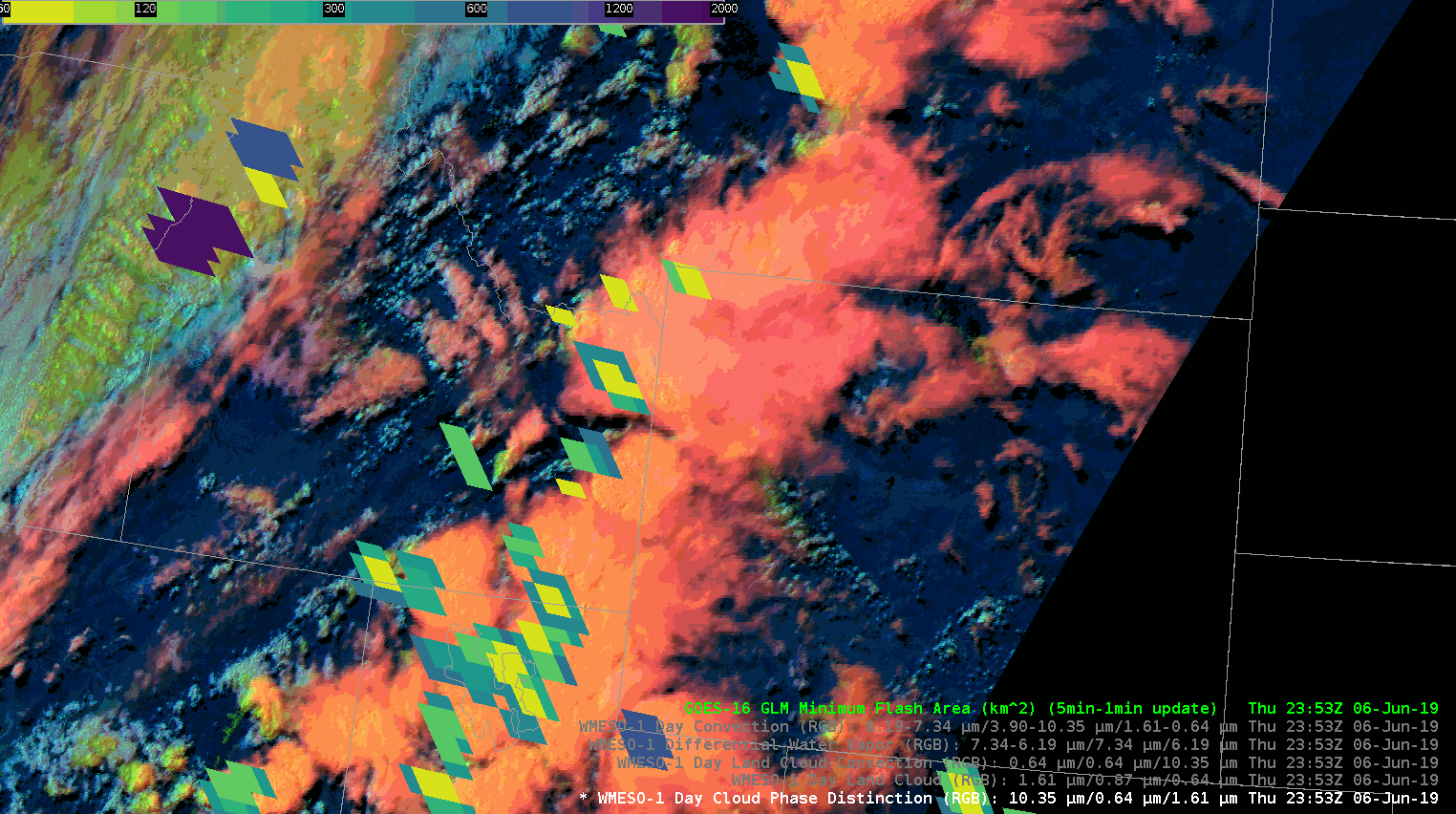
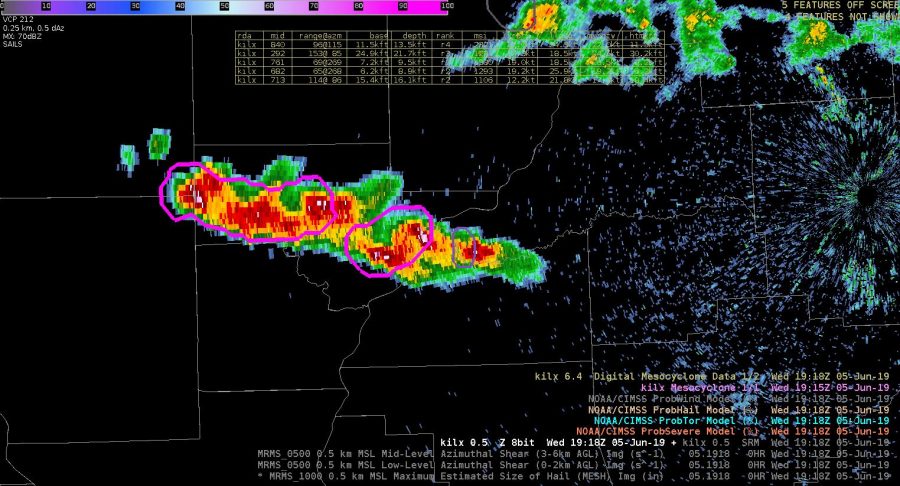 I’m comparing the actual sounding to what’s shown on nucaps, and allsky to see what’s initializing the best. The actual sounding shows 3025kj of surface lavyer cape and 1453 of mixed layer.
I’m comparing the actual sounding to what’s shown on nucaps, and allsky to see what’s initializing the best. The actual sounding shows 3025kj of surface lavyer cape and 1453 of mixed layer.